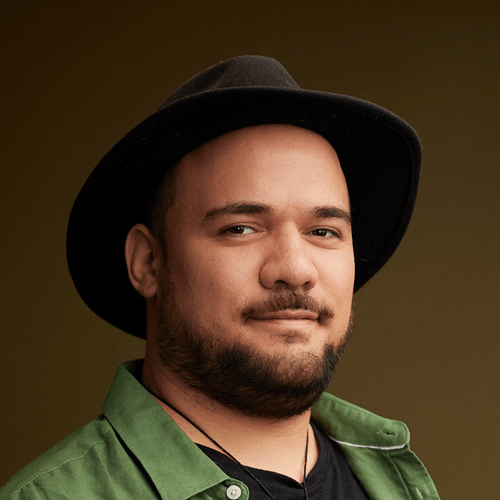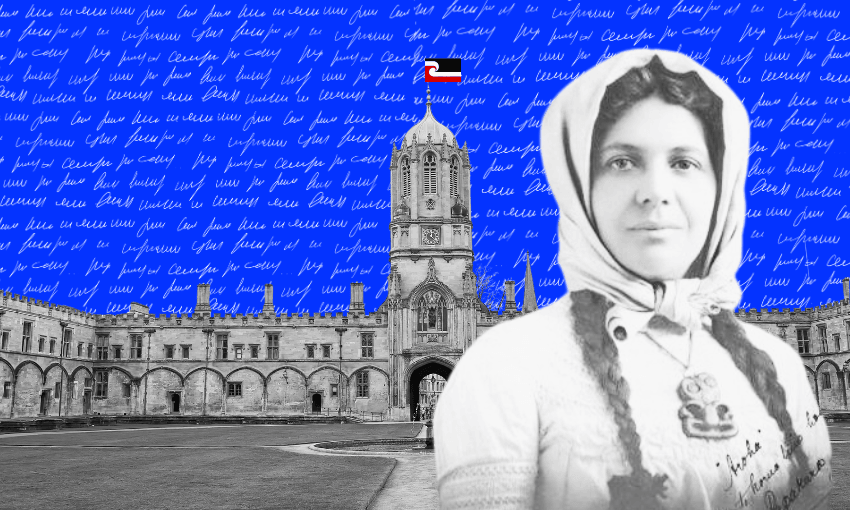The young East Coast photographer is turning her lens toward whakapapa, whenua and the future of Māori portraiture.
When 22-year-old photographer Jazmin Tainui Mihi Paget-Knebel got the call to say she had won the 2025 Kīngi Tuheitia Portraiture Award, she was on campus, preparing her assignments for submission. “It was hand-in week,” she laughs. “I thought they were just calling to ask me to do media or something.” But behind the call were the judges themselves – and they had unanimously chosen her image, Taniwha Chasers, as the winner of the prestigious $20,000 prize.
Shot on a beach in Ōpōtiki, the photograph is a striking black-and-white portrait of a rangatahi on horseback, galloping across the sand, tino rangatiratanga flag raised, hooves pounding. It’s cinematic, but real. Bold, yet unpretentious. “I didn’t stage anything,” she explains. “I just put the word out to my cousins, asked whoever was keen to bring their horses to the beach, and gave them the freedom to ride how they wanted. The flag was something I had with me – one of the boys chucked it on a stick and took off.”
For Paget-Knebel, Taniwha Chasers is more than a portrait. It’s a reclamation. “Horses were brought here as tools of colonisation – but in our town, they’ve become a source of pride. They’re part of us now.” The judges agreed, calling the work “uplifting, joyful… full of hope and youthful energy” and praising its powerful message about the ongoing reclamation of whakapapa and whenua.
Born and raised in the coastal township of Ōmaio, Paget-Knebel has whakapapa back to Te Whānau-ā-Apanui, Whakatōhea, Ngāpuhi and Ngāti Hine. She was homeschooled by her mum and took up photography at age 12 as a way of exploring her environment. “Growing up surrounded by te taiao, by the moana – I had this instinct to document it. It was an outlet.”
At 16, she attended a National Geographic photo camp in Murupara. “That changed everything. I realised photography could be a way to explore and express my Māoritanga, not just aesthetics.” Since then, her focus has been unapologetically kaupapa Māori – reframing the camera as a tool for re-indigenising perspective. “Photography has long been a colonial weapon,” she says. “I’m here to shift that. We deserve to see ourselves in our own light.”
Now in the final year of a photography honours degree at Massey University, Paget-Knebel is already thinking ahead. Next year, she hopes to enrol in a full-immersion te reo Māori course. “I want to ground myself in our language before anything else,” she says. “This win kind of flipped my plans – but in a good way. The future is bright. I just want to keep making meaningful work.”
Her influences range from icons like Lisa Reihana and Fiona Pardington to the toi Māori on her own marae. “There’s inspiration everywhere. Even our activists – people like Hana-Rawhiti [Maipi-Clarke, Te Pāti Māori MP] – push me to think about how our art fits into our wider struggle for sovereignty.”
Asked what she’d most love to photograph next, Paget-Knebel shares a powerful vision. “Right now, I’m working on a project about our atua – trying to depict them through a photographic lens that honours their complexity. Not humanising them the way we’ve been taught to. Just showing them as they are, in our stories.”
She also dreams of connecting with other indigenous communities around the world. “It’s not just about Māori,” she says. “I want to document the beauty in how our people relate across oceans – how we hold each other up.”
Despite the sudden wave of attention – media interviews, high-profile messages, hundreds of social media notifications – Paget-Knebel remains grounded. “I’ve been overwhelmed by the love. But at the end of the day, I’m just a girl from Ōmaio, trying to tell the stories that matter.”
At the awards ceremony at Pipitea Marae in Te Whanganui-a-Tara, Jazmin stepped on stage in a pair of red bands – the unofficial footwear of the East Coast. “We’re born in them,” she jokes. “I wanted to carry home with me.”
And with Taniwha Chasers, she did just that – capturing not only the spirit of her whānau, but a future where Māori see ourselves not through someone else’s gaze, but through our own.
This is Public Interest Journalism funded by NZ On Air.



